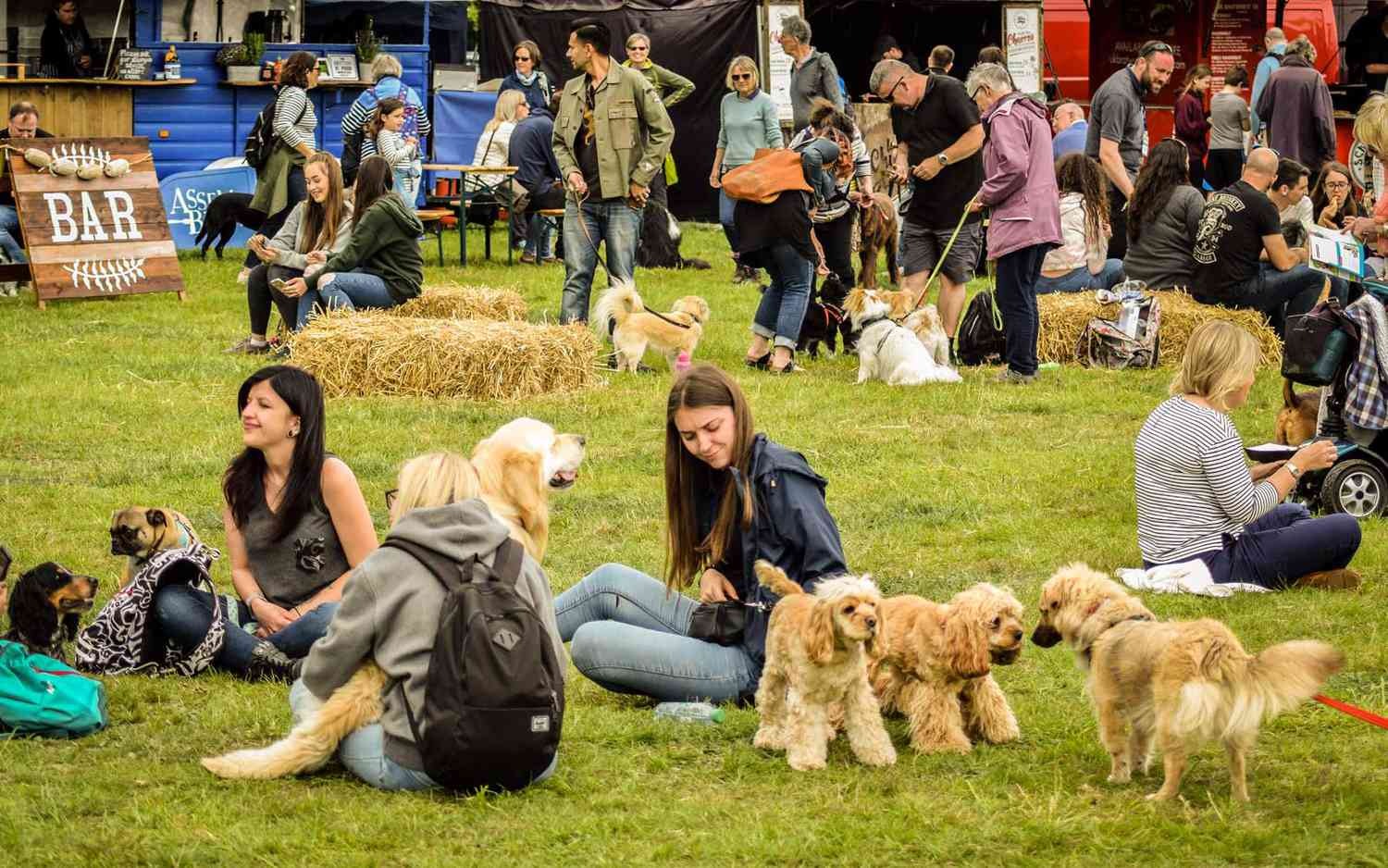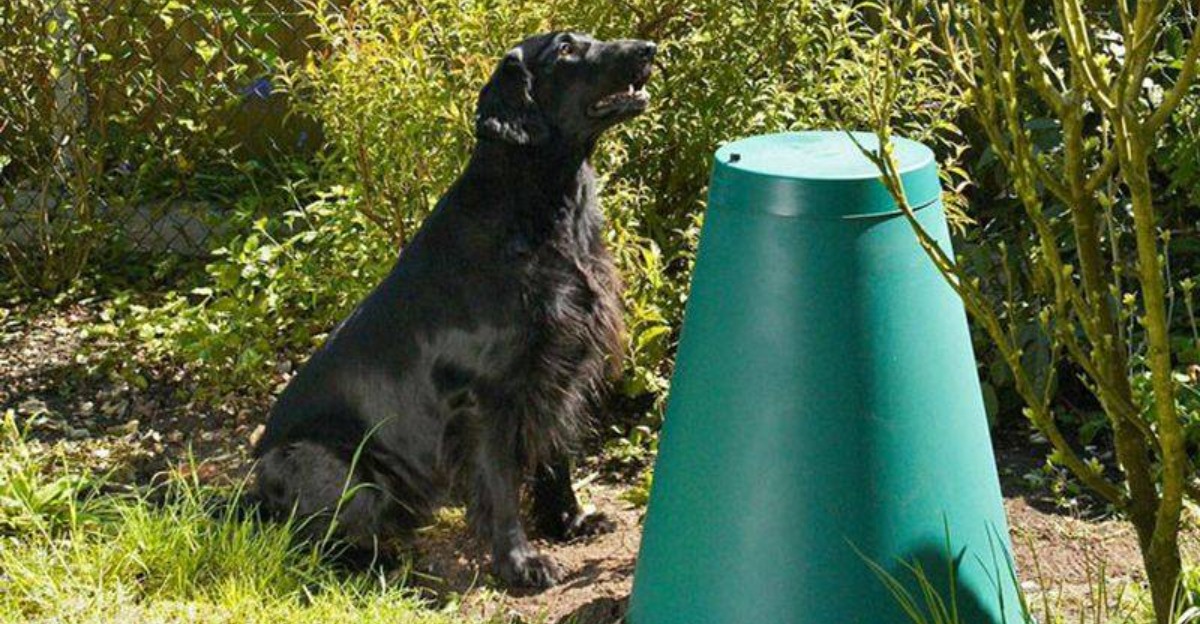
Pets in traditional festivals: cultural perspectives & animal welfare concerns.
“Exploring the intricate relationship between pets and traditional festivals, this article examines how cultural practices around animals reflect deep-rooted symbolism, religious devotion, and societal values, while highlighting growing concerns about animal welfare. It delves into global perspectives, ethical challenges, and modern adaptations that balance heritage, compassion, and responsible celebration in a rapidly evolving world.”
🐶 Pet Star
59 min read · 7, Oct 2025

Introduction
Across the world, animals have played significant roles in human societies—not only as companions but also as cultural symbols. From Hindu rituals in India to festivals in Japan, Thailand, and Latin America, animals are often integral to traditions and celebrations. However, the intersection of cultural expression and animal welfare has become increasingly complex. As societies modernize and animal rights awareness grows, the question arises: how can we preserve the cultural richness of traditional festivals while ensuring humane treatment of animals?
This article explores the role of pets and animals in traditional festivals around the world, delving into cultural perspectives, symbolism, and ethical concerns. It further examines the evolving balance between tradition and compassion, highlighting the global shift toward animal-friendly celebrations.
1. Historical and Cultural Roots of Animals in Festivals
The relationship between humans and animals dates back thousands of years. Early human societies revered animals as spiritual guides, symbols of power, fertility, and divine messengers. Many festivals that include animals are deeply embedded in cultural identity.
1.1 India: The Deep Bond of Religion and Ritual
India is a vivid example where animals play diverse roles in cultural and religious celebrations. The cow is revered as sacred, the elephant symbolizes Lord Ganesha, and dogs are honored as loyal guardians.
During Tihar (Nepal and parts of India), a festival similar to Diwali, animals such as cows, crows, and dogs are worshipped. On Kukur Tihar, dogs—both pets and strays—are adorned with garlands, given food, and celebrated for their loyalty. This festival beautifully highlights the bond between humans and animals in a spirit of gratitude and respect.
In contrast, some festivals—like Jallikattu in Tamil Nadu or cockfighting and bull races in rural regions—have drawn criticism for potential animal cruelty. While defenders argue that these practices represent tradition and local identity, animal rights groups push for reform or humane alternatives.
1.2 Japan: Symbolism and Elegance
In Japan, animals often represent seasonal changes and mythological stories. The Namahage Festival features men dressed as demon-like beings who visit homes to drive away evil spirits—a ritual where symbolic animal masks are sometimes used. The Cat Festival in Aoshima and the Hachiko Memorial Festival honor loyalty, luck, and companionship associated with animals.
These modern celebrations, while based on folklore, tend to focus more on symbolism and representation rather than involving real animals—showing how Japan has adapted cultural heritage to align with modern animal welfare ethics.
1.3 Latin America and Spain: Between Tradition and Controversy
In Spain, the Running of the Bulls (San Fermín) is one of the most internationally recognized festivals. However, it also faces severe criticism from animal welfare activists due to the stress and injuries experienced by the bulls. Similarly, cockfighting and bullfighting remain controversial, even though they are seen as part of cultural identity in regions like Mexico, Colombia, and the Philippines.
Conversely, in parts of Latin America, some indigenous festivals treat animals as companions in rituals rather than tools of entertainment. For instance, Andean communities often include llamas and alpacas in processions to symbolize prosperity, fertility, and harmony with nature.
1.4 Thailand and Southeast Asia: Elephants, Monkeys, and Faith
Thailand’s Surin Elephant Round-Up showcases the historical bond between elephants and humans. Traditionally, elephants were revered as symbols of royal power and strength. Today, while the festival attracts tourism, it also raises ethical concerns over the treatment and training of elephants used for performances.
Similarly, the Monkey Buffet Festival in Lopburi offers a feast for monkeys as gratitude for their role in local mythology. Although it promotes tourism, welfare experts have pointed out issues such as crowd stress and overfeeding—highlighting the need for careful management of animal-centered events.
2. Pets as Participants in Modern Festivals
With urbanization and changing lifestyles, pets—especially dogs and cats—have become part of contemporary celebrations. Festivals now frequently include pet parades, costume contests, and religious blessings.
In Western countries, events like Halloween Pet Parades or Christmas Dog Walks celebrate pets as family members. Churches in parts of the U.S., Italy, and the Philippines hold “Blessing of the Animals” ceremonies, inspired by Saint Francis of Assisi, the patron saint of animals.
These events reflect a positive trend—moving from symbolic to compassionate participation. Pets are no longer objects of ritual but cherished companions, deserving respect and comfort.
However, even these well-meaning events can cause stress for animals if not properly managed—due to loud noises, crowds, or costumes that restrict movement.
3. Animal Welfare Concerns: Between Devotion and Distress
While animals enrich the spiritual and cultural fabric of festivals, their involvement often raises serious welfare concerns. These concerns include:
3.1 Physical Harm and Exploitation
In festivals involving sports or contests—such as bullfighting, Jallikattu, cockfighting, or horse racing—animals face injuries and immense stress. Even decorative practices, like painting or dyeing animals for aesthetics, can cause allergies, toxicity, and discomfort.
3.2 Psychological Stress
Noise, crowds, and chaotic environments can lead to severe anxiety in animals. Firecrackers during festivals like Diwali terrify pets and street animals alike. Dogs and cats often flee from homes, become disoriented, or suffer hearing damage.
3.3 Neglect in the Name of Celebration
During festivals, many people temporarily “adopt” or decorate animals but fail to ensure long-term care. After events, animals are sometimes abandoned or ignored, leading to welfare crises.
3.4 Commercial Exploitation
With increased commercialization, animals are sometimes used as photo props, ornaments, or performance tools—often without proper food, rest, or healthcare. Tourist-driven animal festivals, if unregulated, risk prioritizing profit over compassion.
4. The Ethical Shift: From Exploitation to Empathy
In recent decades, the global conversation on animal rights has significantly influenced traditional practices. Many festivals have been reformed, replaced, or reinterpreted to reduce harm while retaining cultural meaning.
4.1 Humane Alternatives and Reforms
- In India, Jallikattu regulations now mandate veterinary checks and ban physical abuse.
- Spain has seen the rise of “bloodless” bull runs, where symbolic activities replace real fights.
- In Japan and the U.S., animal parades use costumes or statues instead of live animals, maintaining festivity without cruelty.
4.2 Education and Awareness
NGOs, animal welfare groups, and social media campaigns play vital roles in educating communities. Public awareness about animal stress, ethical breeding, and rescue initiatives has inspired change. For example:
- Campaigns during Diwali encourage silent fireworks and pet-safe celebrations.
- Awareness programs during Kukur Tihar emphasize caring for stray animals year-round, not just during festivals.
4.3 Cultural Continuity with Compassion
The goal is not to erase traditions but to evolve them. Communities worldwide are learning to celebrate heritage while practicing empathy. Rituals can remain meaningful if they adapt—by honoring animals as sentient beings, not instruments.
5. Global Case Studies of Change
Case 1: Nepal’s Kukur Tihar
Once confined to local villages, Kukur Tihar has become an international symbol of compassion. The global attention it received inspired animal lovers worldwide to dedicate a day to celebrate dogs. The festival’s growing fame has also improved street dog welfare campaigns in Nepal.
Case 2: Spain’s Toro de la Vega Festival
Formerly known for spearing bulls, this event underwent legal reforms after international outrage. Now, it’s celebrated without animal harm, preserving cultural pride while respecting animal life.
Case 3: Thailand’s Elephant Festivals
Animal rights organizations collaborated with tourism boards to shift from performing elephants to sanctuary-based festivals, where elephants roam freely and interact naturally with visitors.
Case 4: Western Pet Blessings
The Feast of St. Francis now emphasizes adoption drives, vaccination camps, and rescue awareness—linking spirituality with animal welfare.
6. Balancing Tradition and Animal Welfare
Preserving cultural identity and ensuring animal well-being need not be opposing goals. The solution lies in ethical participation, education, and community involvement.
- Policy Reforms: Governments can regulate animal use in festivals through welfare laws, veterinary checks, and cruelty prevention guidelines.
- Community Empowerment: Local traditions can evolve organically when communities are part of the reform process.
- Sustainable Practices: Encouraging symbolic rituals (like clay animal idols, or virtual parades) can maintain cultural expression without involving live animals.
- Media Responsibility: Positive representation of humane practices can inspire others to adopt ethical traditions.
7. The Road Ahead: Compassionate Celebrations
As global consciousness shifts toward empathy, many younger generations advocate “celebrations with kindness.” With urban pet culture expanding, animals are increasingly seen as family members rather than ritual objects.
Incorporating animal welfare into cultural practices signifies progress, not loss. Tradition gains strength when it evolves with humanity’s growing understanding of compassion. The next step is ensuring cultural education and empathy coexist—celebrating festivals that honor life in all forms.
Throughout human history, animals have been deeply intertwined with cultural identity, religious rituals, and social celebrations, often playing symbolic, spiritual, and practical roles in festivals across the world, reflecting the complex and multifaceted relationship between humans and non-human companions; in India, for instance, animals occupy a central place in many traditional celebrations, where cows are revered as sacred symbols of prosperity and nurturing, elephants are worshipped as embodiments of Lord Ganesha during Ganesh Chaturthi, and dogs are honored during Kukur Tihar in Nepal and parts of northern India, where they are garlanded, fed special treats, and celebrated for their loyalty, showcasing a cultural acknowledgment of the bond between humans and their animal companions, while simultaneously highlighting the contrasts in how animals are treated across different rituals, as in the case of Jallikattu in Tamil Nadu, where bulls are released into open arenas for sport, eliciting both cultural pride and ethical debates over animal welfare due to the physical stress and potential harm caused to the animals involved; similarly, in Latin America and Spain, traditional events such as bullfighting and the Running of the Bulls in Pamplona are deeply ingrained in regional identity yet have attracted international criticism for cruelty, demonstrating the tension between cultural heritage and modern animal rights perspectives, whereas in Japan, festivals often emphasize symbolic representations of animals, such as cat-themed celebrations in Aoshima or the Hachiko Memorial Festival, focusing on attributes like loyalty, luck, or seasonal symbolism rather than involving live animals, illustrating an adaptation of cultural practices to align with contemporary ethical sensibilities; in Southeast Asia, particularly Thailand, elephants are central to historical festivals such as the Surin Elephant Round-Up, celebrating the long-standing relationship between humans and these majestic creatures, yet raising welfare concerns due to the training methods and pressures placed on performing animals, while the Monkey Buffet Festival in Lopburi, designed to honor monkeys as part of local mythology, inadvertently exposes them to stress and overfeeding in crowded tourist settings, highlighting the need for careful consideration of animal welfare in cultural celebrations; in modern urban contexts, pets like dogs and cats increasingly participate in festivals as family members, celebrated through costume parades, blessing ceremonies, and social media campaigns, as seen in Western Halloween pet parades or the Feast of St. Francis animal blessings, demonstrating a shift from using animals solely as ritual objects to recognizing their sentience and intrinsic value, yet even these seemingly benign celebrations can inadvertently cause stress due to loud noises, restrictive costumes, or over-stimulation, emphasizing that welfare considerations must remain central regardless of context; physical harm, psychological stress, neglect, and commercial exploitation remain prevalent concerns in festivals worldwide, whether in traditional rural practices or urbanized celebrations, with animals being subjected to painting, dyeing, or crowded performances, leading to allergies, poisoning, or trauma, while abandonment post-festival exacerbates welfare challenges; however, recent decades have witnessed a global ethical shift, promoting humane alternatives such as symbolic representations, regulated sports, and veterinary oversight, balancing cultural preservation with compassionate treatment, exemplified by reforms in India’s Jallikattu, Spain’s “bloodless” bull runs, Thailand’s sanctuary-based elephant festivals, and educational campaigns encouraging safe and pet-friendly Diwali practices, reflecting an understanding that cultural continuity need not come at the expense of animal well-being; case studies such as Nepal’s Kukur Tihar, which honors dogs and inspires worldwide appreciation for pet care, or Spain’s Toro de la Vega Festival, which transitioned from lethal bull spearing to cruelty-free celebrations, illustrate the feasibility of maintaining tradition while minimizing harm, while urban pet-focused rituals emphasize adoption drives, vaccination programs, and rescue awareness, demonstrating that ethical engagement with animals can enhance both cultural meaning and societal compassion; moving forward, the integration of animal welfare into traditional festivals requires multi-faceted strategies, including policy reforms to regulate treatment, community engagement to foster responsible participation, educational initiatives to raise awareness about stress, anxiety, and neglect, and promotion of symbolic or virtual alternatives that preserve ritual significance without involving live animals, thereby reinforcing the principle that festivals should celebrate shared cultural heritage while honoring the intrinsic value and dignity of every living being; ultimately, as global consciousness about animal rights grows, a new paradigm emerges in which pets and festival animals are increasingly viewed not as objects of entertainment or ritual tools but as sentient companions deserving of respect, care, and ethical consideration, encouraging communities to innovate in their traditions, ensuring celebrations remain joyful, culturally relevant, and compassionate, exemplifying how humanity’s understanding of empathy can coexist with the preservation of ritualistic and symbolic heritage, thereby creating a future in which festivals honor life in all its forms and strengthen the moral fabric of society, bridging the gap between cultural devotion and ethical responsibility, fostering practices that celebrate animals through recognition, gratitude, and humane participation rather than through harm, fear, or exploitation, ultimately underscoring the profound potential of festivals to serve not only as markers of tradition and identity but also as platforms for advancing ethical consciousness, compassion, and respect for the natural world while maintaining the aesthetic, spiritual, and communal richness that has made such celebrations enduring features of human civilization across continents and generations.
Animals have played a central and multifaceted role in human culture for millennia, symbolizing everything from spiritual devotion to loyalty, strength, prosperity, and the interconnectedness of humans with the natural world, and nowhere is this more evident than in traditional festivals, where pets and other animals are often celebrated, revered, or utilized in ways that reflect deep-seated cultural values, religious beliefs, and social customs, yet at the same time raise important questions about their welfare and ethical treatment, as seen in the diverse practices across the globe; in South Asia, particularly India and Nepal, festivals like Diwali, Tihar, and Ganesh Chaturthi illustrate the spiritual and symbolic significance of animals, with cows being venerated for their sacred status, elephants honored as embodiments of divine power during Ganesh Chaturthi, and dogs celebrated during Kukur Tihar, a festival in which they are garlanded, fed special offerings, and acknowledged for their loyalty and companionship, which not only demonstrates cultural reverence but also encourages community members to reflect on their relationships with animals, yet these celebratory practices coexist with controversial events such as Jallikattu in Tamil Nadu, where bulls are released into open arenas for sport, eliciting debates between tradition and animal welfare due to the potential for injury and stress to the animals involved; similar tensions exist in other parts of the world, such as in Spain and Latin America, where festivals like the Running of the Bulls or bullfighting are deeply embedded in regional identity and local pride but face international criticism for cruelty, highlighting the complex negotiation between maintaining cultural heritage and adhering to modern ethical standards regarding animals; in Japan, festivals often emphasize symbolic representation rather than the direct involvement of live animals, with events such as the Cat Festival in Aoshima and the Hachiko Memorial Festival honoring loyalty, companionship, and the human-animal bond through storytelling and imagery, demonstrating a model where tradition can be maintained while minimizing harm, whereas in Southeast Asia, particularly Thailand, elephants have historically played a significant role in festivals like the Surin Elephant Round-Up, reflecting their cultural and historical significance as symbols of royal authority and national pride, but these festivals also raise welfare concerns regarding the methods used to train elephants and the stress they endure during performances, and similarly, the Monkey Buffet Festival in Lopburi celebrates monkeys as part of local folklore but inadvertently exposes them to overcrowding, overfeeding, and potential health hazards, underscoring the need for careful management and ethical oversight when animals are involved in public celebrations; in contemporary urban contexts, pets, particularly dogs and cats, have increasingly become participants in festivals as family members, celebrated through costume parades, blessing ceremonies, social media campaigns, and themed events such as Halloween pet parades or the Feast of St. Francis in Christian communities, reflecting a shift from using animals as ritual objects to recognizing them as sentient beings deserving of care and respect, yet even in these seemingly benign contexts, animals may experience stress due to loud noises, restricted movement, or excessive stimulation, emphasizing that welfare considerations are essential regardless of cultural setting; the primary animal welfare concerns associated with festivals include physical harm, psychological stress, neglect, and commercial exploitation, which manifest in various forms such as injuries during contests, stress from large crowds and loud noises, abandonment after events, forced participation, and exposure to chemicals or dyes used for decorative purposes, and these issues underscore the tension between cultural practices and evolving standards of ethical treatment; however, in recent decades, there has been a global shift toward reconciling cultural tradition with animal welfare, illustrated by reforms such as regulated Jallikattu practices in India, Spain’s “bloodless” bull runs, sanctuary-based elephant festivals in Thailand, and the growing popularity of symbolic or non-invasive representations of animals in festivals worldwide, reflecting the understanding that festivals can retain cultural significance while prioritizing ethical treatment; education and awareness campaigns by NGOs, animal welfare groups, and social media initiatives have played a significant role in promoting humane practices, encouraging communities to adapt festivals in ways that minimize harm while preserving cultural identity, such as emphasizing silent fireworks during Diwali to protect pets, conducting adoption drives and veterinary care programs during pet blessings, and encouraging responsible interaction with animals during community events, thereby illustrating that tradition and compassion are not mutually exclusive; case studies further demonstrate the potential for humane adaptation: Nepal’s Kukur Tihar celebrates dogs for their loyalty, inspiring both local and international appreciation for responsible pet care; Spain’s Toro de la Vega transitioned from lethal bull spearing to a cruelty-free festival, showing that cultural heritage can be preserved even when practices are reformed; Thailand’s elephant festivals have increasingly integrated sanctuary-based approaches, where elephants can engage naturally with their environment while visitors observe respectfully, thereby balancing cultural significance, tourism, and animal welfare; urban pet-focused celebrations increasingly incorporate welfare guidelines, emphasizing proper handling, limited exposure to stressors, and public education, reinforcing the notion that ethical engagement enhances cultural meaning and strengthens the bond between humans and animals; moving forward, balancing tradition with compassion requires comprehensive strategies, including policy reforms to regulate animal involvement, community participation to ensure responsible practices, educational campaigns to raise awareness about stress, neglect, and abuse, and the use of symbolic or virtual alternatives that maintain ritual and celebratory value without compromising welfare, thereby creating opportunities for festivals to serve as platforms for promoting empathy, ethical responsibility, and respect for life; ultimately, the integration of animal welfare into traditional festivals reflects a broader societal recognition of animals as sentient beings, capable of experiencing joy, fear, and suffering, and as integral participants in cultural narratives rather than mere instruments of entertainment or ritual, highlighting the moral imperative to adapt longstanding traditions in ways that honor both heritage and compassion; through thoughtful adaptation, festivals can celebrate animals not only as cultural symbols but also as living companions whose dignity and well-being must be respected, ensuring that celebrations are joyous, ethical, and inclusive, and that cultural continuity is achieved alongside the promotion of humane practices, demonstrating that humanity’s understanding of empathy and ethical responsibility can coexist with rich, meaningful, and vibrant traditions, ultimately allowing societies to celebrate festivals that honor life in all forms, foster moral reflection, and strengthen the connection between humans, animals, and the shared cultural landscape.
Conclusion
Animals have always played a central role in human festivals—symbolizing strength, faith, prosperity, and companionship. However, what was once seen as devotion can sometimes manifest as distress when viewed through modern animal welfare ethics.
Today’s challenge is not to abandon tradition but to reimagine it with empathy. From Nepal’s Kukur Tihar to Spain’s reformed bull festivals, communities are showing that culture and compassion can coexist.
The future of festivals lies in humane innovation—retaining spiritual and cultural meaning while ensuring the welfare of every living being involved. By blending respect for heritage with responsibility toward animals, humanity can celebrate in ways that truly honor life itself.
Q&A Section
Q1:- What role do animals play in traditional festivals?
Ans:- Animals often symbolize power, loyalty, fertility, or divinity in traditional festivals. They serve as companions, spiritual symbols, or protectors, depending on cultural beliefs.
Q2:- Why are some festivals criticized for animal cruelty?
Ans:- Certain practices, like bullfighting or animal races, involve physical harm, stress, or exploitation of animals. Modern ethical standards question the suffering inflicted in the name of tradition.
Q3:- How are cultures adapting to promote animal welfare in festivals?
Ans:- Many festivals are adopting symbolic representations, using statues or images instead of live animals, and enforcing welfare laws to prevent cruelty.
Q4:- What is Kukur Tihar, and why is it significant?
Ans:- Kukur Tihar is a festival celebrated in Nepal to honor dogs for their loyalty and service. It’s globally admired for promoting kindness and respect toward both pet and stray dogs.
Q5:- How can people ensure pets’ safety during celebrations like Diwali or New Year?
Ans:- By avoiding loud fireworks, keeping pets indoors, providing a calm environment, and ensuring they have proper identification in case they get scared and run away.
Similar Articles
Find more relatable content in similar Articles

Social Media for Pets: Turning Your Pet into a Digital..
From playful puppies to charis.. Read More

Composting Pet Waste: A Greener Way to Clean Up...
As pet ownership continues to .. Read More

Pets and Mental Health: The Science Behind Emotional H..
Discover the profound impact o.. Read More

Virtual Vet Visits: Are Online Consultations Reliable?..
As pet healthcare embraces dig.. Read More
Explore Other Categories
© 2024 Copyrights by rPets. All Rights Reserved.